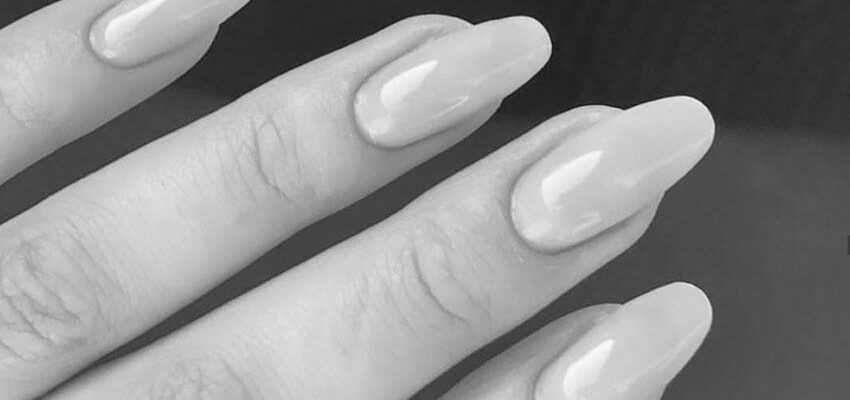Do Acrylic Nails Harm Natural Nails?
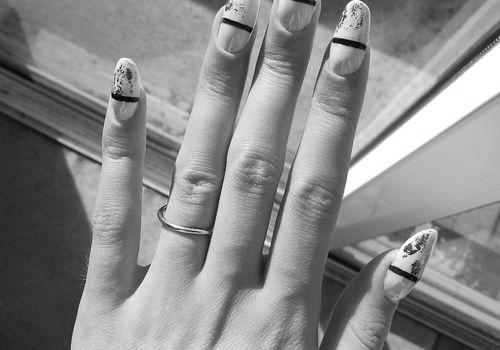
Despite its popularity, some people are still confused about the effects of acrylic nails on natural nails. Do acrylic nails cause contact dermatitis? Can acrylic nails tear and peel? These are all legitimate questions you should ask yourself before getting acrylic nails. The answers below may surprise you! Read on to discover the most common problems associated with acrylic nails. And don’t forget to check out our tips to avoid nail problems. We’ve compiled a comprehensive list of the issues when wearing acrylic nails if you’re still unsure.
Can acrylic nails damage natural nails?

Whether or not acrylic nails can damage your natural nails is a personal choice. You can opt to wear them every few weeks or every month. However, it is vital to ensure proper maintenance of your acrylic nails. Regular touch-ups of acrylic nails are necessary to prevent damage to your natural nails. Professional nail technicians will remove the acrylics after three months. This is a good idea since rest time is essential for your nails.
Getting acrylic nails can damage your natural nails in several ways. Acrylic nails will make your natural nails feel flimsy and tearable, but they can also weaken them. In addition, you should avoid picking or rubbing your acrylic nails, which can change the surface texture of your natural nails and cause them to peel or become uneven. Moreover, improper technique can also cause nail fungus.
While acrylic nails may look beautiful, you should remember that they’re made from plastic. They’re made from a liquid or powder that hardens into a shell. The problem arises when you try to pick them off. It takes three months for the natural nail to grow back. So, if you want to keep your acrylic nails long-term, you should consider getting them done at a salon that provides good quality service.
While you may be tempted to choose a cheap acrylic nail polish, remember that your health comes first. If you don’t want your acrylics to break, make sure the nail technician does not use a drill on your natural nails. An exercise may cause you pain and increase the risk of infection. So, before getting acrylics, ask your nail technician to file your nails by hand, as this will prepare your natural nails for the process.
If you decide to wear acrylic nails, ensure you know how to remove them properly. Once you’ve removed your acrylic nails, use a nail polish remover. Then wrap your nails in tin foil and cover them for 30-40 minutes. After the foil has cooled, you can check whether your acrylics are gone. If you still have some acrylic on your nails, buff them to remove any small pieces.
Another option is gel nails. Gels are softer than acrylics but can also damage your natural nails. Gel nails are easier to remove and can be cleaned at home without a professional. Gels are also easier to remove and are generally odorless. So, while acrylics may look aesthetically appealing, they can damage your natural nails if you are not careful. And, of course, there is the chance of infections or other complications.
Can they cause contact dermatitis?
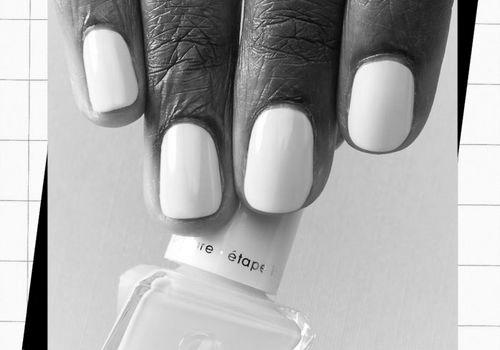
Inflammation of the skin caused by an allergen and contact dermatitis can occur if you have acrylic nails. The symptoms are typically pain, swelling, and redness around the nail bed.
In addition, it is essential to avoid contact with other types of acrylic products.
If you regularly wear acrylic nails, you should wear gloves and moisturize your hands regularly. The fumes released by acrylic nail products can cause irritation, dizziness, headaches, nausea, and fatigue. Some people may experience allergic reactions if exposed to large quantities of acrylics. If you are prone to contact dermatitis, change your nail varnish frequently to avoid the chemicals.
To avoid any allergic reactions, you should follow the correct removal process of acrylic nails. If you cannot remove the nails yourself, you should contact a reputable nail salon immediately. Attempting to remove the pins by yourself could cause further pain and damage. The Asthma and Allergy Foundation of America recommends applying over-the-counter corticosteroids and using calamine lotion. If you suspect an allergic reaction to acrylic nails, see a dermatologist as soon as possible.
Aside from allergic reactions, there are also potential side effects of acrylic nails, including discoloration of the nail plate. This is particularly common around the cuticle area. The best way to avoid contact dermatitis is to avoid these products. If you want to enjoy the benefits of acrylic nails, consider doing so. It will give you a beautiful manicure, but it is important to note that these products are not without risk.
An allergy to acrylic nails can be a temporary skin reaction caused by the chemicals in the nails. However, it will clear up once the acrylics are removed from your nail plate. A mild acrylic nail allergy will subside once you stop wearing your acrylic nails. It’s best to follow the proper care procedure for acrylic nails. And as long as you follow the ethical guidelines, you should avoid any allergic reactions.
While the primary allergen in acrylic nails is toluene, the ingredient responsible for allergic reactions to nail enamel is toluene-sulfonamide formaldehyde. This compound is a small amount of formaldehyde and has little effect on most people. However, people with an allergy to toluene-sulfonamide formaldehyde may develop contact dermatitis if they contact the resin.
Can they cause tearing and peeling?
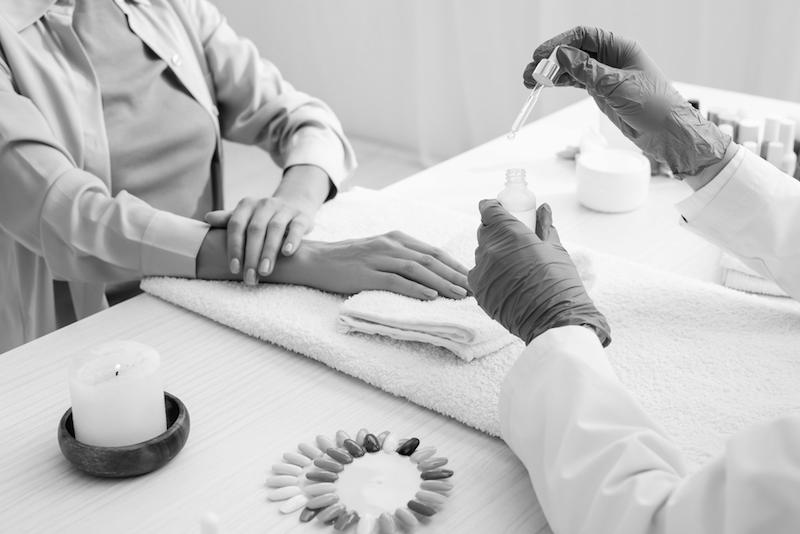
There are many reasons that nails may peel and tear, including diet, manicure techniques, or an underlying medical condition. Your doctor may send your nail clipping to a dermatopathologist for further examination. Sometimes, it is as simple as a fungal or bacterial infection. Peeling and tearing are often accompanied by redness, soreness, or swelling. Peeling nails may signify a severe medical condition, such as atopic dermatitis or an allergic reaction to a particular cosmetic.
You can do several things to prevent nail tearing and peeling after getting an acrylic manicure. First, moisturize your nails regularly. A nail product with harsh chemicals can cause your nails to peel and tear. Apply a moisturizing lotion to your nails every night after applying nail polish. When applying nail polish, wear cotton gloves, as these gloves protect your nails from harsh chemicals. See a dermatologist if you still notice peeling and tearing after a few weeks of acrylic nail application.
You may have a lousy technician if you notice tearing and peeling after getting acrylic nails. If they apply them too thickly, they could damage your natural nails. The pins aren’t meant to stay on for long. If you don’t change your acrylics every six to eight weeks, you could experience severe problems down the line. Then, you’d need to pay another salon for another set of acrylics.
Regular manicures are also a common cause of peeling. The harsh chemicals that remove acrylic nails often strip the skin of its natural oils. A break from regular manicures will give you the chance to repair your nails before they peel. Taking a break from regular manicures will help, too. Peeling and tearing might be signs of a disease such as a kidney or liver dysfunction. But you can also try using a hypoallergenic nail polish remover.
Other causes of tearing and peeling are anemia, tuberculosis, or an endocrine hormonal issue. Your nails can peel because of an overactive thyroid gland. Hyperthyroidism is when your thyroid produces too many hormones. If you are suffering from this condition, your doctor will recommend getting an appointment with a dermatologist. If the problem persists, you may want to consider a different treatment.
In addition to getting the correct treatment, a break can be caused by fungal infections. A dermatologist can confirm the condition and prescribe oral antifungal meds to make the nail heal. To prevent further damage, you may want to cut your nails short to minimize trauma. In most cases, this will solve the problem sooner. You can also reduce the risk of peeling and tearing by taking care of them properly.
Home Remedies For Brittle Nails
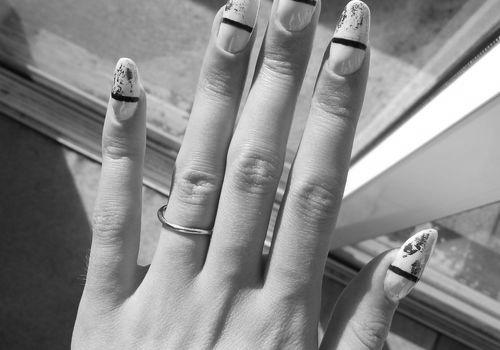
If you have brittle nails and would like to make them stronger, try applying apple cider vinegar to them. The vinegar contains iron, calcium, and vitamins. Simply mix some of the vinegar with water and soak your nails in it every day. Lemon juice and olive oil are also excellent home remedies for brittle nails, making them stronger. Apply them once a day and notice a difference in no time.
Apple cider vinegar
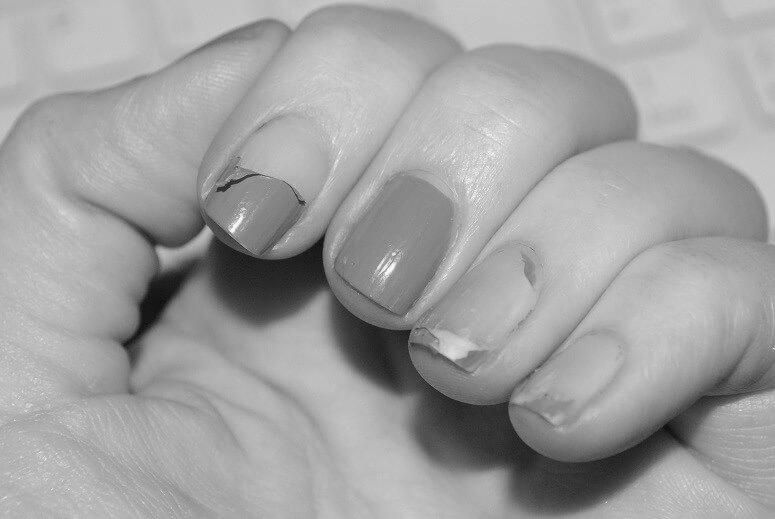
If you are looking for a cheap home remedy for brittle nails, apple cider vinegar is excellent. It contains high vitamin C, calcium, iron, and potassium concentrations. Simply soaking your nails in apple cider vinegar will prevent the onset of infections caused by fungus. You can also make a paste of papaya and pineapple juice and apply it to your nails every day. Afterward, rub your nails with warm olive oil.
Another great way to strengthen your nails is to mix a teaspoon of apple cider vinegar with a tablespoon of coconut oil. You can also soak your nails in apple cider vinegar overnight and apply the diluted solution to them each morning. Then, let it sit for 10 minutes. Repeat the procedure the following day to get stronger and more beautiful nails. Alternatively, you can use apple cider vinegar mixed with water to soak your nails daily.
To use apple cider vinegar for your nails, you need to choose organic, raw apple cider vinegar. Do not filter it! Then, mix it with filtered water. Gently press your nails into the solution. Leave it on for about 10 minutes, and you will notice more robust and healthier nails. Add a bit of raw natural honey, and you’re all set! It’s simple to use.
While apple cider vinegar does not cure brittle nails, it can help strengthen your nails. Vitamin C, calcium, and gelatine are essential for your nails, and if they’re weak or split, you need to add them. You can also apply diluted apple cider vinegar to your nails to prevent cracks and strengthen them. A few drops of lemon juice also help improve your nails.
Lemon juice can help strengthen brittle nails by containing vitamin C, which is essential for the healthy growth of strong nails. Lemon juice is packed with antioxidants, strengthening your nails and removing stains. It can also make your nails whiter and remove stains. You must apply lemon juice to your nails at least twice a week to get the best results. After a week, you should see results!
Another natural remedy that can help strengthen brittle nails is tea tree oil. Coconut oil is rich in nutrients and antifungal properties that help fight fungal infections. Apply the mixture to your fingernails and leave it on for 20 minutes. Rinse them with warm water and apply a moisturizer. You may repeat this treatment daily to get the best results. Petronella and eucalyptus oil are also great for strengthening the nails.
Lemon juice
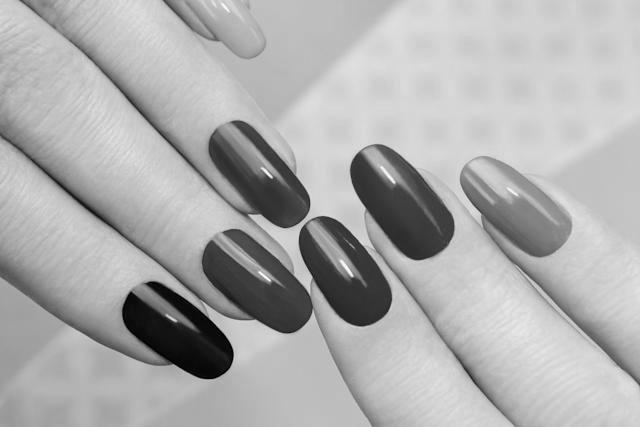
Tea tree oil can also cure brittle nails, but you need to dilute it in a carrier oil before you apply it. Lemon juice can also help strengthen brittle nails and remove yellow stains from too much nail paint. Most home remedies are best tried at night when your body is rested and repairs itself. Using tea tree oil on brittle nails has shown promising results, but it is best to follow the directions carefully.
A mixture of lemon juice and olive oil can also treat brittle nails. Combine the two in equal parts and massage the nails using your fingers. After applying the mixture, wear a soft hand glove to avoid exposure to water. Repeat this treatment twice a week until your nails become more muscular. Once you have used the lemon juice mixture on your nails, you can apply another layer of the oil to strengthen your nails.
Citrus fruits are found around the world. These fruits are rich in vitamin C and have powerful antioxidant properties. Using lemon juice on your brittle nails daily will help strengthen them. Massage the mixture into the nails with a cotton swab for about five to 20 minutes, and repeat it every three days. If the lemon juice treatment does not work, try a vitamin E oil. It will strengthen your brittle nails by supplying the nutrients they need.
Another home remedy for brittle nails is using sea salt. Sea salt has many natural benefits and has been used for centuries to treat skin conditions. Lemon juice helps remove dead skin and soften cuticles. It is also an effective treatment for brittle nails. Using sea salt in place of regular bathing is another alternative. It can strengthen brittle nails, soften cuticles, and add a beautiful shine to your nails.
Another natural remedy is apple cider vinegar. Apple cider vinegar contains acetic acid, which protects the nails against infections. Add a teaspoon of apple cider vinegar to a cup of water and soak your nails in it for 10 minutes every day. Applying lemon juice to your nails with gloves will also strengthen them. This remedy is a great way to prevent brittle nails. It is straightforward and has numerous benefits.
Another home remedy for brittle nails is olive oil. Lemon juice combined with two tablespoons of olive oil will moisturize the skin around your nails, promoting strong, healthy nails. Use this solution on your nails and cuticles before bedtime. You can also rub coconut oil on your nails to keep them hydrated and soft. Once you’ve soaked your nails in the mixture, you can apply a pair of gloves to keep them moist overnight.
Olive oil
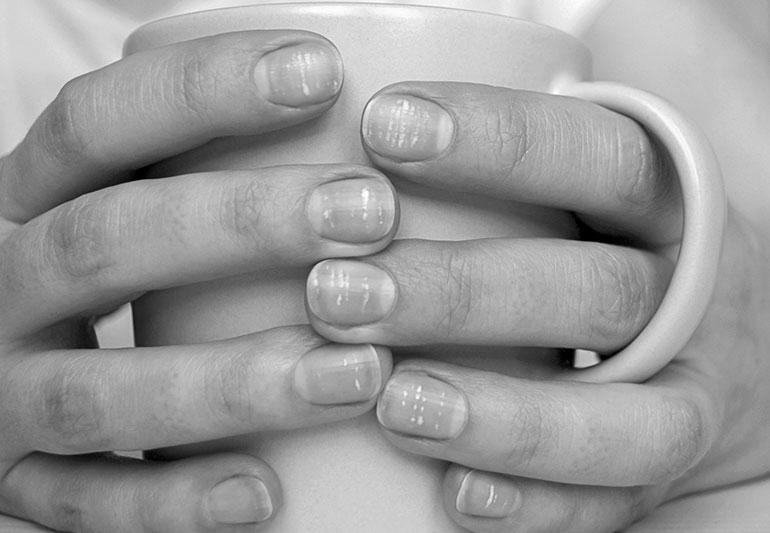
You may be surprised to learn that you can cure brittle nails with olive oil. These natural remedies can help you prevent the condition and restore your nails to their natural strength. Apply a small amount of olive oil to your fingernails and let it sit overnight. The next day, wash it off with lukewarm water. Repeat this procedure two to three times a week to see the results. Brittle nails can be an indication of another underlying problem.
The lemon juice and olive oil blend will work wonders for your damaged nails. Lemon juice contains alpha-hydroxy acid, which lightens the nails and heals micro-cracks. Olive oil is an excellent carrier oil for your nails and is packed with Vitamin E, which repairs damaged nails and stimulates growth. Simply warm olive oil and massage it into your nails and let it sit for at least 10 minutes before rinsing off.
Another olive oil and lemon juice remedy is another effective way to strengthen brittle nails. Simply mix lemon juice and olive oil and apply the mixture to your nails. Leave it on for at least an hour and rinse it off with water. Repeat this procedure twice a week to see noticeable results. And you’ll notice a difference right away! The solution can also be applied to your fingers and toenails.
In addition to using olive oil as a natural treatment for brittle nails, you can also apply it to your cuticles to strengthen them and prevent brittleness. Olive oil penetrates the skin and nails and helps repair the damages caused by over-drying. It softens the skin and nails, which contributes to the strength of your nails. So, try it today! You may be surprised at how easily it works!
Apart from using olive oil to moisturize your cuticles and nails, olive oil can also protect your hands from lint, which can smudge your newly polished nails. And because it is highly moisturizing, olive oil helps strengthen your cuticles and your nails. As it’s naturally nonionic, it’s an ideal natural moisturizing treatment for your nails.
Apart from using olive oil on your nails, you can also mix it with wheat germ oil, lemon, or frankincense oils. After soaking your fingers in the solution for about 15 minutes, pat them dry and repeat the procedure two to three times a week. You should consider using olive oil for brittle nails if you see noticeable results. You’ll love it! If you’re tired of paying hundreds of dollars for manicures, use olive oil as an alternative to hiring a salon.
